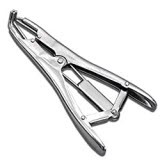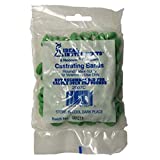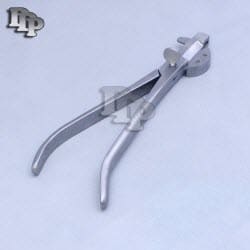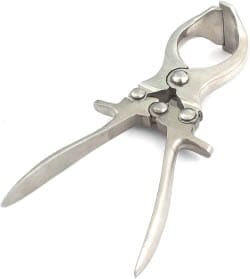Docking sheep tails, or sheep tailing, is a flock management practice of shortening the tail of sheep to improve the health of sheep and lambs. By preventing fecal matter from accumulating on the tail and rear of your sheep, you can help to avoid serious health issues like fly strike (wool maggots). In fact, research has proven that proper sheep lamb tail docking practices have no negative impact on lamb mortality or production.
Other benefits of docking sheep tails include:
- Shearing Sheep is Easier
- Observing the Udder of Pregnant and Nursing Ewes is Easier
- Dressing Percentage of Market Lambs is Higher
- It’s Less Labor to Dress Lambs During Processing
Do All Breeds of Sheep Need to be Docked?
Not all sheep breeds require docking. Hair sheep, for example, do not have wool, and as a result there’s typically no need to dock their tails. Short-tailed sheep breeds such as East Friesian, Finnsheep, Gotland, Icelandic, Romanov, Soay, and Shetland are also sometimes not docked, though that decision is really a management choice of the shepherds raising them.
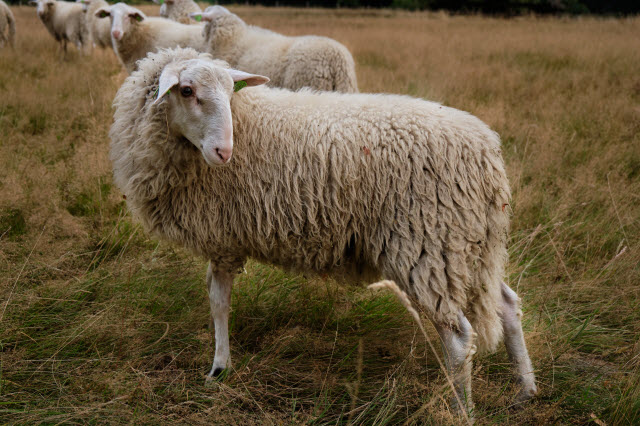
Some shepherds note that a sheep’s tail does not interfere with breeding and can serve as natural protection in extreme temperatures, but my advice is to dock your sheep as it’s an easy, inexpensive process that will help to keep them clean and disease free.
Methods of Docking Sheep Tails
There are several common methods for sheep tail docking. These include:
- Banding lamb tails
- Electric docking iron
- Emasculator or burdizzo emasculator
I’ll explain how each method works below, and the pros and cons of each type of lamb docking.
Banding Lamb Tails
My preferred method for docking lambs is to apply a specially designed rubber band to the tail with a tool called an elastrator when the lamb is very young. This is a bloodless method of docking lamb tails, and it’s very quick and easy for the shepherd.
The rubber band quickly cuts off the blood supply to the lamb’s tail. Within the next two weeks the tail will simply fall off.
While docking your sheep with bands can cause the lambs some pain, it’s very short lived. In my experience the lambs are typically up and nursing as if nothing happened in 5-10 minutes.
I recommend that your lambs be at least 24 hours old prior to banding. Your rubber bands should be applied in the lamb’s first week of life (there’s actually a law in the UK that prohibits it on lambs over 1 week old). This way docking is done before the tails begin to fill-out and develop.
I recommend docking your lambs in this way during the second or third day, before releasing them from the lambing jug.
It’s a good idea to vaccinate your sheep for tetanus (lock-jaw), but if the lamb’s mother was not vaccinated, then administer the tetanus anti-toxin at the time of tail docking to reduce the risk to the lambs.
I recommend having some lukewarm rubbing alcohol handy, and dipping the bands in this prior to administering them. This warms the rubber to prevent breaking in cold temperatures, and also sterilizes the band.
Electric Docking Iron
Using an electric docking iron is not for the faint of heart, but it’s the method many shepherds prefer. Using a specialized tool allows the shepherd to cut and cauterize the tail at the same time.
Emasculator
An emasculator (typically used for castration), has both a cutting and crushing mechanism and can be used for tail docking, though it’s not my recommended method.
The crushing mechanism seals the blood vessels on the tail section which will remain on the lamb. The cutting edge will removes the balance of the tail.
If you use an emasculator when docking sheep, I recommend leaving the tool on the tail for at least 30 seconds. This will prevent (or at least reduce) bleeding.
Burdizzo Emasculator
A Burdizzo is a similar tool to an emasculator, but it lacks a cutting mechanism. If you use a Burdizzo to crush the tail, then you will have to have a sharp knife or similar to remove the tail. If you plan to use a burdizzo to dock tails, then use the 9 inch version.
I do not recommend using a knife to dock your lambs. It’s inhumane, and will result in excessive bleeding.
How Long Should a Lamb’s Docked Tail Be?
It will be difficult to find two shepherds who agree about the “best” length of a sheep’s tail. In the United Kingdom, it’s the law that a docked tail must be left long enough to cover a ewe’s vulva or a ram’s anus. Most countries around the world follow a similar practice. That said, most shepherds raising sheep for show dock their lambs shorter, to provide a cleaner presentation in the show ring.
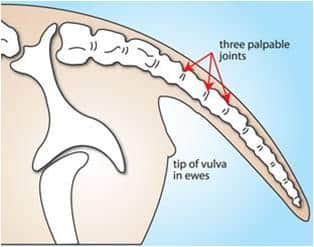
Ultra-short tail docking may have some risks associated with it, as it is rumored to increase the likelihood of vaginal prolapses, but there is currently not much data to support this.
The American Veterinary Medical Association, American Sheep Industry, and the American Association of Small Ruminant Practitioners all recommend that lamb tails be removed to a length no shorter than the distal end of the caudal tail fold. Lambs fed a highly concentrated (grain-based) diet who have ultra-short tails are more at risk for rectal prolapse. Short tail docking in lambs does damage the muscles and nerves used by a lamb’s anus.
My Recommendation for Sheep Tail Length
In my experience (raising sheep for both farm production, and for exhibition in the show ring) — the best place to dock the lamb is between the vertebrae closest to the end of the caudal tail fold.
There are two flaps of skin on either side of the lamb’s anus, connecting its posterior to its tail. I generally place the elastic band just inside the end of these flaps which is farthest from the lamb’s body (top arrow in the image above). This leave’s the muscles undamaged, but still provides a neat and clean appearance in the show ring.
Sheep Tail Docking as Routine Animal Husbandry Practice
While the vast majority of farmers see lamb tail docking as a form of animal husbandry and disease prevention, there are others who view docking as a form of mutilation. The Humane Society of the United States would like to ban tail docking.
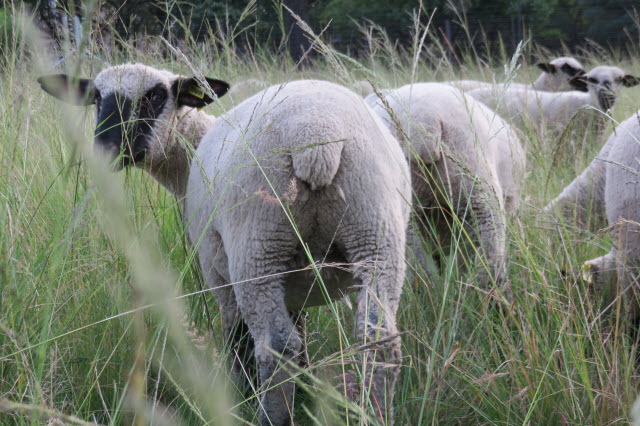
It is important that when you dock your lamb’s tails that you do so in the most humane way possible. Band your lambs between 1 and 7 days of age. If you are using a different lamb docking method, then 6 weeks of age is the absolute longest you should wait.
You Might Also Like These Articles


